







Pygoscelis adeliae
Adelie penguin
By Veronica Combos
Kingdom: Animalia
Phylum: Chordata
Subphylum: Vertebrata
Class: Aves
Order: Sphenisciformes
Family: Spheniscidae
Genus: Pygoscelis
Species: Pygoscelis adeliae
Geographic Range
Pygoscelis adeliae is found only in the Antarctic region. Adelie penguins breed on the coasts of Antarctica and on surrounding islands. The area with the most abundant population of Adelie penguins is in the Ross Sea. (Ainley, 2002; Berger, 2004)
Biogeographic Regions:
Antarctica (native).
Habitat
Depth
200 m (average)
(656 ft)
Living in the Antarctic region, Adelie penguins must withstand very cold temperatures. During the winter months they inhabit large coastal ice platforms, so they will have better access to food. Krill, the primary staple in their diet, feed on plankton that live underneath sea ice, so there is an abundance of krill in those areas. During the breeding season, typically in the early spring and summer months, they travel to coastal beaches to build their nests on ice-free ground. With access to open water, this locale provides the penguins with almost immediate access to food for themselves and their young. (Alten, 1997; Berger, 2004; George, 2002)
These animals are found in the following types of habitat:
polar; terrestrial; saltwater or marine.
Terrestrial Biomes:
icecap.
Aquatic Biomes:
coastal.
Physical Description
Mass
3.62 to 4.99 kg
(7.96 to 10.98 lbs)
Length
69.85 cm (average)
(27.5 in)
Adelie penguins are one of the smaller species of penguins, just above 60.96 cm tall. Their back, tail, head, and face are black. They have a white belly and a white ring around their brown eyes. Their feathers cover half of their bill, which is black with an orange base. They have dull white to pink legs and feet with black soles. (Berger, 2004; Glausiusz, 2007; Grossman, 2003)
Some key physical features:
endothermic ; homoiothermic; bilateral symmetry .
Sexual dimorphism: sexes alike.
Reproduction
Breeding interval
Breeding occurs once a year from early spring to summer.
Breeding season
Breeding occurs in the austral spring and summer.
Eggs per season
1 to 3; avg. 2
Time to hatching
24 to 39 days; avg. 32 days
Time to fledging
28 days (average)
Time to independence
60 days (average)
Age at sexual or reproductive maturity (female)
3 to 6 years; avg. 4 years
Age at sexual or reproductive maturity (male)
4 to 6 years; avg. 5 years
Male Adelie penguins attempt to attract mates with a "salute" in which they they stand about 4 m away from the female of interest and put on a display of beak thrusting, neck arching, and reaching his full height. This salute also serves to announce that male's territory in the colony. In early spring, Adelie penguins journey back to their breeding grounds. Males arrive first. Each pair recognizes each other's mating call and their nesting site from the previous year. These pairs may reunite for consecutive years unless one of the mates does not return to the nesting site. Males also exhibit defensive measures of beak pecking and open yelling to defend territories and mates. (Alten, 1997; Richdale, 1951)
Mating systems:
monogamous .
Generally, Adelie penguins return to their same nesting site around springtime for mating. The lengthening of days in the spring stimulates penguins to begin their period of hyperphagia, or persistent feeding. They feed constantly to store fat that they need during the breeding and incubation periods. They build stone nests in preparation for their two eggs. Adelie penguins most commonly produce two offspring per breeding season, with one egg laid shortly after the first. The eggs incubate for about 36 days. The parents alternate caring for the young for about 4 weeks post-hatching, when the young enter a creche with other juvenile Adelie penguins for protection. At this time, both parents return to the sea to feed. (Ainley, 2002; Alten, 1997; Berger, 2004)
Key reproductive features:
iteroparous ; seasonal breeding ; gonochoric/gonochoristic/dioecious (sexes separate); sexual ; fertilization ; oviparous .
Both parents invest heavily in their young. During incubation males and females take turns with the egg while the other is feeding. Once the chick is hatched, both adults take turns in feeding and searching for food. Newly hatched chicks are born with down feathers but are unable to feed themselves; they are semi-precocial. Four weeks after a chick has hatched it will join a creche of other juvenile Adelie penguins for protection. During its time in the creche the parents still feed their young. After 56 days in the creche most Adelie penguins become independent. (Ainley, 2002; Alten, 1997; Berger, 2004)
Parental investment:
pre-fertilization (provisioning, protecting: female); pre-hatching/birth (provisioning: male, female, protecting: male, female); pre-weaning/fledging (provisioning: male, female, protecting: male, female); pre-independence (provisioning: male, female).
Lifespan/Longevity
Extreme lifespan (wild)
5 to 16 years
Survivorship among Adelie penguins is lower in individuals who begin to breed at younger ages, between 3 and 5 years. However, individuals that do attempt to breed at an earlier age tend to breed more successfully in later years than penguins that first breed at 5 to 6 years old. Adelie penguins have been known to live as long as 16 years. (Ainley, 2002)
Behavior
Pygoscelis adeliae is a very social species. They are constantly interacting with others in their small group or colony. They also travel together from pack ice to their nesting beach when breeding season is about to begin. There is no known social structure within their colony, but mated pairs are protective of their nest site and display in front of it. Adelie penguins are social hunters as well. They typically stay in groups as it reduces risk of predation and increases efficiency of finding food.
Adelie penguins can porpoise, or shoot out of the water to skim above the surface a few feet before splashing back down. While penguins are out of the water they quickly grab a breath of air. On land they can travel in a variety of ways. Adelie penguins walk upright with a waddling gait, progress by two-footed jump, or they can toboggan: sliding on their belly over ice and snow. (Ainley, 2002; Berger, 2004)
Home Range
These penguins have no designated home range and do not defend a territory outside of their nest site.
Key behaviors:
terricolous; natatorial ; diurnal ; motile ; migratory ; social ; colonial .
Communication and Perception
Adelie penguins are very social and communication with neighbors and mates is important. The most common mode of communication with neighbors are displays and posturing. Mates also communicate using displays, but these are most often more ecstatic and one that only each mate would recognize. Mated Adelie penguins also use calls to identify each other and their offspring. Males and females actively defend their nest site and will often fight with their neighbors. Adelie penguins can signal apprehension by raising their head feathers and they can signal threat by a sideways stare with their crest raised and their eyes rolled downward. (Berger, 2004)
Communicates with:
visual ; acoustic .
Perception channels:
visual ; tactile ; acoustic ; chemical.
Food Habits
The primary food source for Adelie penguins is krill (Euphausia superba). They also consume fish, such as lantern fish and other members of the family Myctophidae and Antarctic silverfish (Pleuragramma antarcticum). Squid, other cephalopods, and amphipods are part of their normal diet as well. Adelie penguins store food and regurgitate it later to feed their newly hatched young. (Ainley, 2002; Berger, 2004)
Primary Diet:
carnivore (piscivore , eats non-insect arthropods, molluscivore).
Animal Foods:
fish; mollusks; aquatic crustaceans; other marine invertebrates.
Predation
Known predators
* leopard seals (Hydrurga leptonyx)
* killer whales (Orcinus orca)
* south polar skuas (Stercorarius maccormicki)
* sheathbills (Chionis albus)
Typical predators of Pygoscelie adeliae are leopard seals (Hydrurga leptonyx), killer whales (Orcinus orca), and south polar skuas (Stercorarius maccormicki). Leopard seals are the most common predators of Adelie penguins, usually near the edge of the ice pack. Leopard seals are never an issue for penguins on shore, because leopard seals only come ashore to sleep or rest. Adelie penguins have learned to evade these predators by swimming in groups, avoiding thin ice, and spending little time in the water within 200 m of the beach. Killer whales generally prey on larger penguin species, but may occasionally take Adelies. South polar skuas prey on eggs and chicks left unguarded by adults or at the edges of creches. act more as scavengers than predators. Sheathbills (Chionis albus) also sometimes taken unguarded eggs. (Ainley, 2002; Alten, 1997)
Ecosystem Roles
Adelie penguins impact krill (Euphausia superba), Antarctic silverfish (Pleuragramma antarcticum), and cephalopod populations, the main species in their diet. These penguins are impacted by leopard seals (Hydrurga leptonyx), killer whales (Orcinus orca), south polar skuas (Stercorarius maccormicki), and sheathbills (Chionis albus). (Ainley, 2002; Grossman, 2003)
Economic Importance for Humans: Negative
There are no known adverse effects of Pygoscelie adeliae on humans.
Economic Importance for Humans: Positive
Adelie penguins are often good indicators of climate change. Adelie penguins are beginning to inhabit beaches that were previously perenially covered in ice, suggesting warming of Antarctic environments. Adelie penguin colonies are highlights for ecotourism in the Antarctic. From the eighteenth to the early twentieth century these penguins were used for food, oil, and bait. Their guano was mined and used as fertilizer. Now they are a protected species in most countries. (Ainley, 2002; Glausiusz, 2007; Grossman, 2003)
Ways that people benefit from these animals:
ecotourism ; research and education; produces fertilizer.
Conservation Status
IUCN Red List:
Not Evaluated.
US Migratory Bird Act:
No special status.
US Federal List:
No special status.
CITES:
No special status.
State of Michigan List: [link]:
No special status.
According to the IUCN Red List, Pygoscelis adeliae is considered "low risk" and of "least concern."
ContributorsTanya Dewey (editor), Animal Diversity Web, University of Michigan Museum of Zoology.
Veronica Combos (author), Radford University. Karen Francl (editor, instructor), Radford University.
References
Ainley, D. 2002. The Adelie Penguin: Bellwether of Climate Change. New York: Columbia University Press.
Alten, M. 1997. Penguin Parenting: Adelie penguins reunite for their annual breeding rituals. Animals, 130: 20-23.
Berger, C. 2004. Sphenisciformes (Penguins). Pp. 147-158 in M. Hutchins, D. Thoney, M. McDade, eds. Grzimek's Animal Life encyclopedia, Vol. 8, 2 Edition. Detroit: Gale Virtual Reference Library. Accessed September 21, 2007 at http://find.galegroup.com/ips/retrieve.do?contentSet=EBKS&resultListType=RESULT_LIST&qrySerId=Locale%28en%2C%2C%29%3AFQE%3D%28ke%2CNone%2C14%29adelie+penguin%24&sgHitCountType=None&inPS=true&sort=DateDescend&searchType=AdvancedSearchForm&tabID=T001&prodId=IPS&searchId=R2¤tPosition=1&userGroupName=viva_radford&docId=CX3406700515&docType=EBKS&contentSet=EBKS.
George, A. 2002. Go with the floe: Adelie penguins can't survive without ice. But you can have too much of a good thing. New Scientist, Dec 21, 2002: 36-40.
Glausiusz, J. 2007. The Beacon Bird of Climate Change. Discover, 28.4: 14.
Grossman, D. 2003. On thin ice: Adelie penguins are proving to be Antarctica's most sensitive indicators of climate shifts. Their falling population portends a multitude of changes that will reverberate throughout the region. Audubon, 105.4: 78-83.
Ainley, D., C. Ribic, G. Ballard, S. Heath, I. Gaffney, B. Karl, K. Barton, P. Wilson, S. Webb. 2004. Geographic Structre of Adelie Penguin Populations: Overlap in Colony-specific Foraging Areas. Ecological Monographs, 74.1: 159-170.
Richdale, L. 1951. Sexual Behavior in Penguins. Lawerence, Kansas: University of Kansas Press.
Roy, T. 2000. Caught In A Melting World - Adelie penguins may be the canaries in the coal mines of global warming. International wildlife, NA: NA. Accessed September 20, 2007 at http://find.galegroup.com/ips/start.do?prodId=IPS.
2009/05/17 04:52:07.854 GMT-4
Source material:
Combos, V. and K. Francl. 2008. "Pygoscelis adeliae" (On-line), Animal Diversity Web. Accessed May 23, 2009 at http://animaldiversity.ummz.umich.edu/site/accounts/information/Pygoscelis_adeliae.html.
Images by ARKive













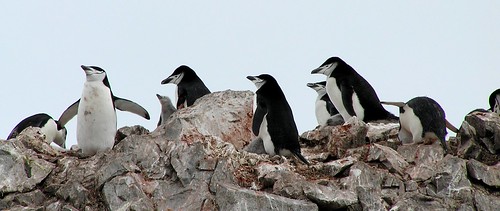
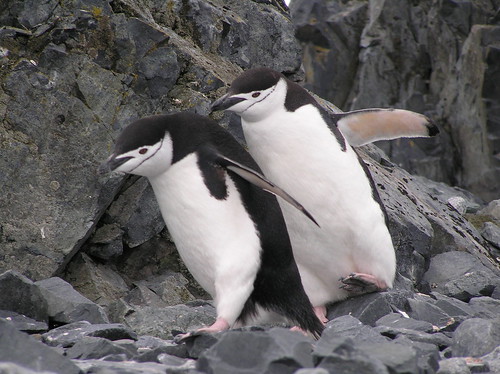
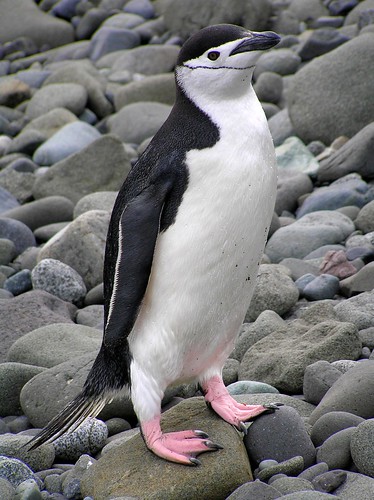

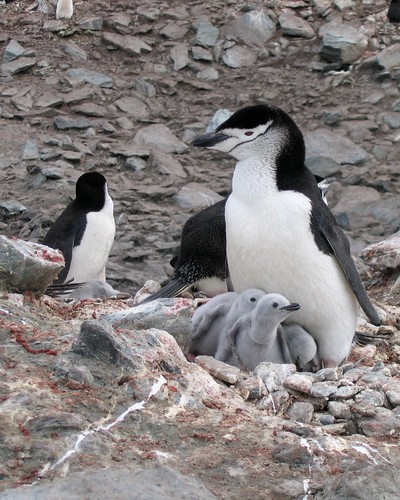
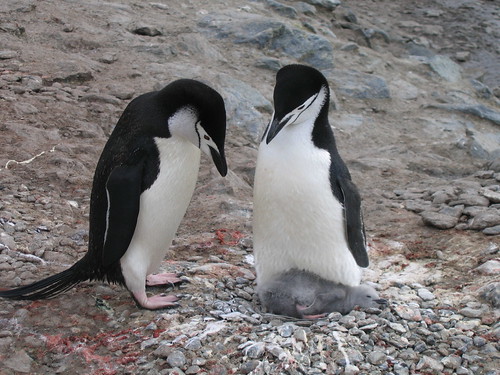
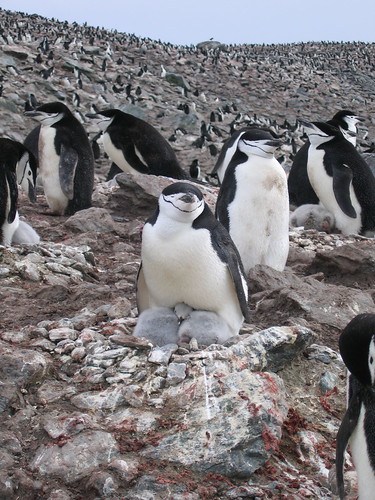

 Samples of ancient protein dating back 80 million years preserved in bone fragments and soft tissues of a hadrosaur. (Credit: Courtesy of NCSU)
Samples of ancient protein dating back 80 million years preserved in bone fragments and soft tissues of a hadrosaur. (Credit: Courtesy of NCSU)






















